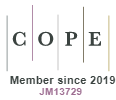‘Beltola Lilies’ – A Solution of Housing for Lower Income People and Introduction of A Module for Flooded Areas
DOI:
https://doi.org/10.15415/cs.2016.32001Keywords:
Slum, Flood, Household, Indigenous materials, Dwelling problem, EPS, Beltola Lilies, ModulesAbstract
The paper analyses the issues faced by a minuscule area of a slum habitat in Dhaka city, Bangladesh. The area of the slum worked upon, the “Beltola Bostee”1, faces major problems of frequent flooding when the households of the area become unfit to live in. Hence, the inhabitants of this area shift to share other households, overcrowding the already cramped living quarters. The idea of “Beltola Lilies” emerges as an attempt to resolve the problem and provide the best possible solution. The “Beltola Lilies” is conceived as a modular accommodation that stands on ground during the dry season, but floats on water during floods, providing the inhabitants a healthy, organised, productive and cost-effective solution for housing. Built with inexpensive and indigenous materials, requiring minimum effort in construction and maintenance, having low energy needs and being sufficiently livable, it promises to address and eradicate some of the current dwelling problems in the slums that exist all over the country.
Downloads
References
[2] FARZANA, K. F. (2008) The Neglected Stateless Bihari Community in Bangladesh: Victims of Political and Diplomatic Onslaught. Journal of Humanities & Social Sciences. 2(1). p.19.
[3] GUANGYU WANG, J. L. I., SHUANGYOU DAI and GUOHUI H.E. (2008) Achieving sustainable rural development in Southern China: The contribution of bamboo forestry. International Journal of Sustainable Development & World Ecology. 15(5). p. 484–495.
[4] HACKER, K.P. et al. (2013) Urban slum structure: integrating socioeconomic and land cover data to model slum evolution in Salvador, Brazil. International Journal of Health Geographics. doi: 10.1186/1476-072X-12-45
[5] KOEKOEK, M. (2010) Connecting Modular Floating Structures. Gemeente Rotterdam: Netherlands
[6] NGUYEN, B. K. (2009) Floating Residence for Over‐flooded Ground, Location: The Central Coast of Vietnam (Masters Degree in Advanced Architectural Studies), The University of Sheffield United Kingdom, South Yorkshire.
[7] OLTHUIS, K. (2010) Float!: Building on Water to Combat Urban Congestion and Climate Change. Amsterdam: Frame Publishers.
[8] OLTHUIS, K. (2013) INHABITAT INTERVIEW (2013): Waterstudio’s Koen Olthuis on FLOAT! In B. Meinhold (Ed.). Amsterdam: INHABITAT.COM Available from: http://inhabitat.com/ inhabitat-interview-waterstudios-koen-olthuis-on-float/. [Accessed: 20th February 2016]
[9] Prosun, P. (2011) The Lift House: An Amphibious Strategy For Sustainable And Affordable Housing For The Urban Poor In Flood-Prone Bangladesh. Waterloo, Ontario, Canada.
[10] RAO, R. (2014) Bamboo Architecture for ecological living. International Journal of Advanced Research in Civil, Structural, Environmental and Infrastructure Engineering and Developing. 1(3), pp. 94-100.
[11] SHAFI, S. A. (2014) A study of Kallyanpur Bostee. In C. F. U. Studies (Ed.), (pp. 76). Dhaka: Centre for Urban Studies.
[12] SHAH, S. P. (1981) Ferrocement in construction: Its economics in developed countries differ from those in developing countries. Available from: http://www.concreteconstruction.net/Images/Ferrocement%20in%20Construction_tcm45-340846.pdf [Accessed: 15th February 2016]
[13] UN-HABITAT. (2008) State of the world’s cities 2010/2011 bridging the urban divide. London and Washington: Earthscan Publications Ltd.
Downloads
Published
Issue
Section
License
Articles in the Journal of Creative Space (Creat. Sp.) by Chitkara University Publications are Open Access articles that are published with licensed under a Creative Commons Attribution- CC-BY 4.0 International License. Based on a work at https://cs.chitkara.edu.in. This license permits one to use, remix, tweak and reproduction in any medium, even commercially provided one give credit for the original creation.
View Legal Code of the above-mentioned license, https://creativecommons.org/licenses/by/4.0/legalcode
View Licence Deed here https://creativecommons.org/licenses/by/4.0/
 |
Journal of Creative Space by Chitkara University Publications is licensed under a Creative Commons Attribution 4.0 International License. Based on a work at https://cs.chitkara.edu.in/ |







